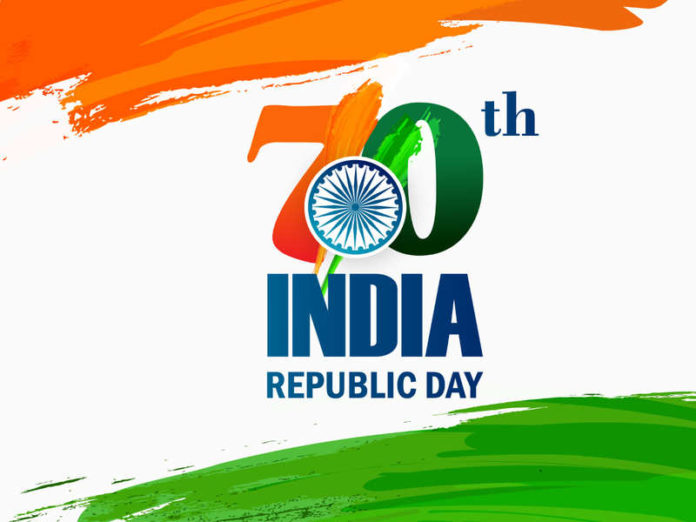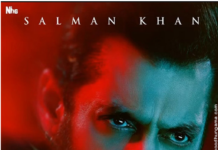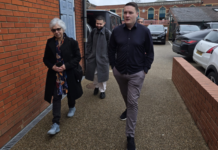New Delhi, Jan 26 (PTI) India Saturday celebrated the 70th Republic Day with a grand military parade and exhibition of its history, cultural diversity and strategic weaponry at the Rajpath — the city’s centrepiece boulevard — in presence of thousands of spectators including foreign dignitaries and the country’s top political and military brass.
South African President Ramaphosa was the chief guest at the 90-minute celebrations marking the anniversary of the day when the world’s biggest democracy was declared a republic in 1950.
A total of 22 tableaux, 16 from states and union territories and six from central government ministries and departments, were part of the cultural parade overall theme of which was life and ideals of Mahatma Gandhi. This year, India is celebrating 150th birth anniversary of the father of the nation.
Ramphosa’s presence at the celebrations was significant as Gandhi’s 21-year stay in South Africa played a pivotal role in moulding him into the apostle of peace.
The national capital was brought under a massive security cover for the event as it took place days after two suspected Jaish-e-Mohammad terrorists were arrested.
The Republic Day parade ceremony commenced with Prime Minister Narendra Modi, wearing a yellowish orange turban, leading the nation in paying homage to the fallen soldiers by laying a wreath at the Amar Jawan Jyoti under India Gate.
An eternal flame burns at the Amar Jawan Jyoti to commemorate the indomitable courage of our armed forces personnel who have made the supreme sacrifice in the service of the country.
As per tradition, after unfurling the tri-colour, the national anthem was played with a 21 gun salute following which President Ram Nath Kovind took the salute of marching contingents.
Alongside Ramphosa, the ceremonial parade was watched by Vice President M Venkaiah Naidu, former Prime Minister Manmohan Singh, Congress President Rahul Gandhi and the country’s top political and military brass.
A major highlight of the parade was participation of four Indian National Army (INA) veterans — Parmanand, Lalti Ram, Hira Singh and Bhagmal, all aged over 90 years, for the first time. The other highlights include the display of American howitzers M777, the Main Battle Tank (MBT) T-90 and indigenously developed Akash weapons system.
‘Nari Shakti’ (women power) was on full display at the Rajpath with an all-woman Assam Rifles contingent creating history by participating for the first time in the parade, which was led by Maj Khushboo Kanwar.
Contingents of the Navy, Army Service Corps and a unit of Corps of Signals (transportable satellite terminal) were also led by women officers.
The tableau of Maharashtra portrayed the ‘Quit India movement’ while the tableau of Andaman and Nicobar showcased Mahatma Gandhi’s message to the inmates of the cellular jail in Andaman.
Jallianwala Bagh was the theme of Punjab tableau, which evoked memories of the watershed moment in the independence struggle. Assam came out with a tableau depicting Mahatma Gandhi’s movement in the state and his dream of rebuilding the rural economy by encouraging the growth of cottage industry.
Tableau of Gujarat depicted Mahatma Gandhi’s historical ‘Dandi March’, which shook the foundation of the British empire. Karnataka showcased his momentous efforts at the Belagavi Congress session on 26-27 December 1924 while the tableau of Uttarakhand depicted Anashakti ashram. India’s cultural diversity was also on full display at the celebrations.
Twenty-six children including six girls and 20 boys awardees of Pradhan Mantri Rashtriya Bal Puruskar for their “exceptional achievement” also graced the occasion.
The marching contingents of the Army included the Madras Regiment, the Rajputana Rifles, the Sikh Regiment and the Gorkha Brigade.
The naval contingent comprised of 144 young sailors led by Lieutenant Commander Ambika Sudhakarn. It was followed by naval tableau titled, ‘Indian Navy – Combat Ready Force for National Security’.
The Indian Air Force marching contingent also comprised 144 air warriors. It was followed by the IAF tableau titled ‘Indian Air Force Encouraging Indigenisation’ showcasing the scaled-down models of the aircraft, radar and missile system which have been indigenously designed and manufactured.
The models displayed were Light Combat Aircraft (LCA), Low-Level Light Weight Radar (LLLWR), Sukhoi-30MKI and Akash missile system.
Para-military and other auxiliary forces also participated in the parade along National Cadet Corps and National Service Scheme.
The grand finale of the parade was a spectacular flypast by the IAF.
The fly-past commenced with the ‘Rudra’ formation comprising three advanced light helicopters in ‘Vic’ formation, followed by the ‘Hercules’ formation comprising three C-130J Super Hercules aircraft.
One C-17 Globemaster flanked by two Su-30 MKI fighter jets also displayed their aerial manoeuvring.
Next in line was five Jaguar deep penetration strike aircraft, in ‘Arrowhead’ formation. Following the Jaguars were five MiG-29 upgraded air superiority fighters in ‘Arrowhead’ formation.
The culmination of the parade was a lone Su-30 MKI flying at a speed of 900 km/hr with a ‘Vertical Charlie’ manoeuvre over the saluting dais.
The ceremony culminated with the national anthem and release of balloons.
Modi waved to the crowd after the conclusion of the ceremony and were greeted with loud cheers.

Readers like you, make ESHADOOT work possible. We need your support to deliver quality and positive news about India and Indian diaspora - and to keep it open for everyone. Your support is essential to continue our efforts. Every contribution, however big or small, is so valuable for our future.











